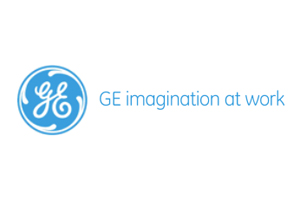GE announced on September 6 that it will buy two European 3D printer OEMs, Arcam of Sweden and SLM Solutions of Germany. Both OEMs are leading makers of high-end metal-based 3D printers aimed at industrial applications, most significantly for end-use parts in verticals such as aerospace, healthcare, and automotive. The acquisition price for both companies is about $1.4 billion. Both acquisitions will be folded into GE’s aviation group, which has been the center of most of GE’s internal 3D printing activity.
This move has huge implications for the 3D printer industry. As a manufacturer, GE was an early adopter of 3D printing technology and has as much in-house capability and expertise as any other company. It also has a large presence in metals-based materials science, including 346 patents. When you combine GE’s manufacturing and engineering prowess, 3D experience, materials-development capability, and financial resources, you have a force to be reckoned with in the 3D market.
How much of a force? GE projects that it will generate $300 million from its new 3D printing division in 2017, and that it will grow to $1 billion by 2020, 40 percent of which will be in services and consumables. By comparison, the largest 3D printer company, Stratasys, is projecting $700 million to $730 million in revenue for 2016.
 GE CEO Jeff Immelt said that the move is part of a plan to make GE “the premier digital industrial company.” The company plans to integrate engineering services and its Predix industrial analytics platform with its 3D printing offerings. A company could contract for GE’s engineering services to design, model, or even produce end-use parts without investing in a printing system. It could even turn to GE for development of custom materials—or “materials as a service.” The integration of Predix gives manufacturers a deeper and more efficient way to monitor and analyze the operation of 3D printers on the shop floor.
GE CEO Jeff Immelt said that the move is part of a plan to make GE “the premier digital industrial company.” The company plans to integrate engineering services and its Predix industrial analytics platform with its 3D printing offerings. A company could contract for GE’s engineering services to design, model, or even produce end-use parts without investing in a printing system. It could even turn to GE for development of custom materials—or “materials as a service.” The integration of Predix gives manufacturers a deeper and more efficient way to monitor and analyze the operation of 3D printers on the shop floor.
Mr. Immelt said that GE is committed to developing a full line of 3D printers, but he emphasized its focus is primarily on the metals segment. Both Arcam and SLM Solutions rely on melting of metal powders to build objects. The main difference is that Arcam’s technology is electron-beam-based and SLM’s is laser-based. Systems from both companies are expensive, ranging from low to mid six figures to more than $1 million. Based on Mr. Immelt’s comments, you can presume that GE will be looking to introduce less expensive models, probably in the mid-range.
Our Take
Machines from Arcam and SLM are more akin to industrial machinery than office equipment, so this move will have little effect on channel partners currently selling 3D printers. However, these acquisitions make GE the new 800-pound gorilla in the industrial 3D printer space, and that will have ripple effects across the model lines of its competitors.
What’s important to keep in mind is that HP and current 3D market leaders 3D Systems and Stratasys have targeted end-use parts production as a key source of future growth. Metal-based production is where the greatest revenue and margin potential lies. HP has said that metal capability is part of its future plans for its Jet Fusion 3D printers. Both 3D Systems and Stratasys are starting to get traction with their metal-capable printers.
GE’s entrance into metal end-use production is a huge disruption for the following reasons:
- It not only creates a formidable competitor, it takes away a large potential customer. GE estimates that 5 percent of its total growth to $1 billion by 2020 will come from internal customers.
- HP, 3D Systems, and Stratasys do not have the internal resources for metals material development that GE does. They rely on partners that may have impressive capabilities, but GE’s internal knowledge and R&D experience are real advantages.
- GE has a manufacturer’s perspective. No other 3D printer OEM can go to a large manufacturer and say, “This works for us when we build jet engines, and we know it will work for you.”
- GE already does significant business as a manufacturer in the industries where metal end-use parts production is most important such as aerospace, automotive, and healthcare. It has strong relationships with many potential customers.
- This move is just one more step toward GE’s total digital industrial vision, for which it has been building an infrastructure for years. That gives it a real advantage as it develops 3D manufacturing systems that are faster, more reliable, and easier to manage.
GE’s presence alone means that other 3D printer OEMs targeting the industrial space should be rethinking their strategies and projections. There are plenty of opportunities outside of what Arcam and SLM currently offer. The main questions are what GE means by a full product line and when will the company fully realize it?
Both 3D Systems and Stratasys have had a rough 18 months or so, and they are trying to return to respectable, reliable growth. HP is taking a slow, methodical approach as it tries to establish itself in the market. End-use parts production is the sweet spot for all three, and GE’s presence is unlikely to change that. However, it might cause these companies to alter their plans, which could affect other aspects of their businesses. Doubling down in the face of tougher competition in the industrial market might reduce R&D funds for other areas or accelerate the end of under-performing lines. Any financial hiccup that the market attributes to GE’s entrance could affect investor confidence as well.
The positive for the market as a whole is that GE’s entrance is a big validation for 3D printing as an end-use manufacturing platform. That could well accelerate development and adoption across the board.





